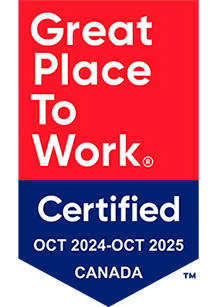The Effects of Filler Settling
Many formulated compounds contain fillers to impart desired properties. The fillers are incorporated (mixed) into the resin and/or hardener or both at the time the products are manufactured. Although formulators take great care in selecting fillers and use various additives to keep them in suspension, there will be some settling occurring under certain conditions.
Conditions conducive to filler settling:
- Lengthy storage under high ambient temperatures.
- Transportation during hot summer months.
- Coarse fillers in the materials (may be necessary to impart certain desired properties).
- The material temperature is too high at the time of packaging.
- Stagnant materials in heated lines on automatic dispense equipment.
- Large container volume.
- Very low viscosity filled product.
The effect of filler settling on the cured product:
- In the case of two component materials, the optimum mix ratio has been calculated based on weight or volume. These calculations take into consideration that the appropriate amount of filler is present in the mix. If the fillers have settled and are not present in the correct amounts at the time of mixing the resultant ratio will be incorrect. Since only the liquid components of the formula react to cause cure, there will be too much or not enough of the liquid components present for all the molecules to properly Crosslink. At best the material will exhibit undesired properties and at worse it will not cure at all.
- In the case of single component materials, filler settling will result in improper cured properties resulting in insufficient strength or cracking etc.
Precautions to minimize filler settling
Store materials in a cool place
- Storing products in a cool place will result in less of a decrease in viscosity of the liquid components and the fillers will remain in suspension longer.
Periodically invert unopened containers in storage
- Inverting containers in storage will keep the fillers in motion minimizing settling. In addition, the small amount of fillers settled will be "soft" and easy to remix.
- As a rule of thumb, inverting the containers once per week is sufficient in most cases.
Mix each component separately before use
- This is a highly recommended practice. The only proviso is to minimize the inclusion of air during this mixing process. Most products are de-aired during manufacturing for several reasons. In the case of electrical components, any included air will have a detrimental effect on the electrical properties and its moisture content could react with the liquid components causing the formation of crust and altering the cure.
- Thorough mixing of each component before use can be achieved with special mixing blades that are designed to minimize the inclusion of air. If the material can be de-aired after mixing, all the better.
Use re-circulating pumps on storage tanks
- Re-circulating pumps are an excellent way to ensure that the fillers are properly dispersed. Some of these pumps can be operated while the material is kept under vacuum or the material is de-aired right after the pump shuts off.
Turn off the heat on dispense lines for long periods of inactivity
- Keep product moving through heated lines. The tubing usually contain small amounts of material allowing the temperature to rise quickly resulting in filler settling. This could result in off ratio product, plugged lines and erratic cured properties.
In Summary: Filler settling, from whatever cause, will result in inferior properties of the cured material. It is important to ensure that all the fillers are dispersed within a product before use. Taking precautions to minimize filler settling is worthwhile insurance.



